
The American aerospace industry is evolving rapidly, with startups leading the way in tackling major challenges like sustainability, talent shortages, and supply chain issues. Here are 10 companies reshaping the future of aerospace:
Hermeus: Developing Mach 5 aircraft for hypersonic travel, cutting transatlantic flight times to 90 minutes.
Relativity Space: Using 3D printing and AI to produce rockets in just 60 days.
Shield AI: Creating AI-powered flight systems for autonomous military aircraft.
Varda Space Industries: Manufacturing advanced materials in zero gravity for use in pharmaceuticals and fiber optics.
SpinLaunch: Launching satellites with a fuel-efficient centrifugal system.
Boom Supersonic: Building eco-friendly supersonic jets for faster commercial travel.
Epirus: Designing high-power microwave systems to neutralize drone threats.
Joby Aviation: Developing electric air taxis for urban air mobility.
Rocket Lab: Offering small satellite launch services with reusable rockets.
Sierra Space: Creating inflatable habitats for space stations and lunar missions.
These startups are addressing critical needs with AI, automation, and advanced materials, ensuring the U.S. remains a leader in aerospace innovation.
How to Build an Aerospace and Defense Startup
1. Hermeus: Building Mach 5 Aircraft

Hermeus is pushing the boundaries of aerospace with its Mach 5 aircraft, capable of flying at an incredible 3,500 miles per hour - twice the speed of the fastest U.S. Air Force jets. Their approach blends established technologies with modern computing and autonomous systems to achieve what many thought unattainable.
At the core of this project is the Chimera engine, a hybrid propulsion system that functions as both a turbojet and a ramjet. In November 2022, Hermeus hit a major milestone by successfully transitioning the engine from turbojet to ramjet mode. This was accomplished in just 21 months on a budget of $18 million. With 15% of its components made using 3D printing, the Chimera engine allows aircraft to take off from regular runways and then accelerate to hypersonic speeds. This achievement highlights the company's ability to deliver cutting-edge results efficiently.
"This achievement is a major technical milestone for Hermeus. But more than that, it's a proof point that demonstrates how our small team can rapidly design, build, and test hardware with budgets significantly smaller than industry peers", said AJ Piplica, CEO of Hermeus.
Hermeus's journey starts with the Quarterhorse, an unmanned hypersonic drone developed through a $60 million partnership with the U.S. Air Force. This drone serves as a testing ground for their technology before moving on to Halcyon, a 20-passenger high-speed commercial aircraft.
The potential of Mach 5 travel is enormous. At this speed, passengers could cross the Atlantic in just 90 minutes. This could lead to major economic benefits:
Impact Category Metric Annual Business Passengers (NY-London) 500,000+ Time Saved Per Route 6 hours one-way Total Annual Time Saved (NY-London) 3 million hours Projected Global GDP Growth $4 trillion annually
Instead of relying on new scientific discoveries, Hermeus focuses on combining existing technologies in smart ways. As COO Skyler Shuford explains:
"We are focusing on component technologies that have existed for a long time. And then for us, the way we think about engineering is figuring out how to bring those component technologies together rather than make a research breakthrough".
2. Relativity Space: Automated Rocket Production
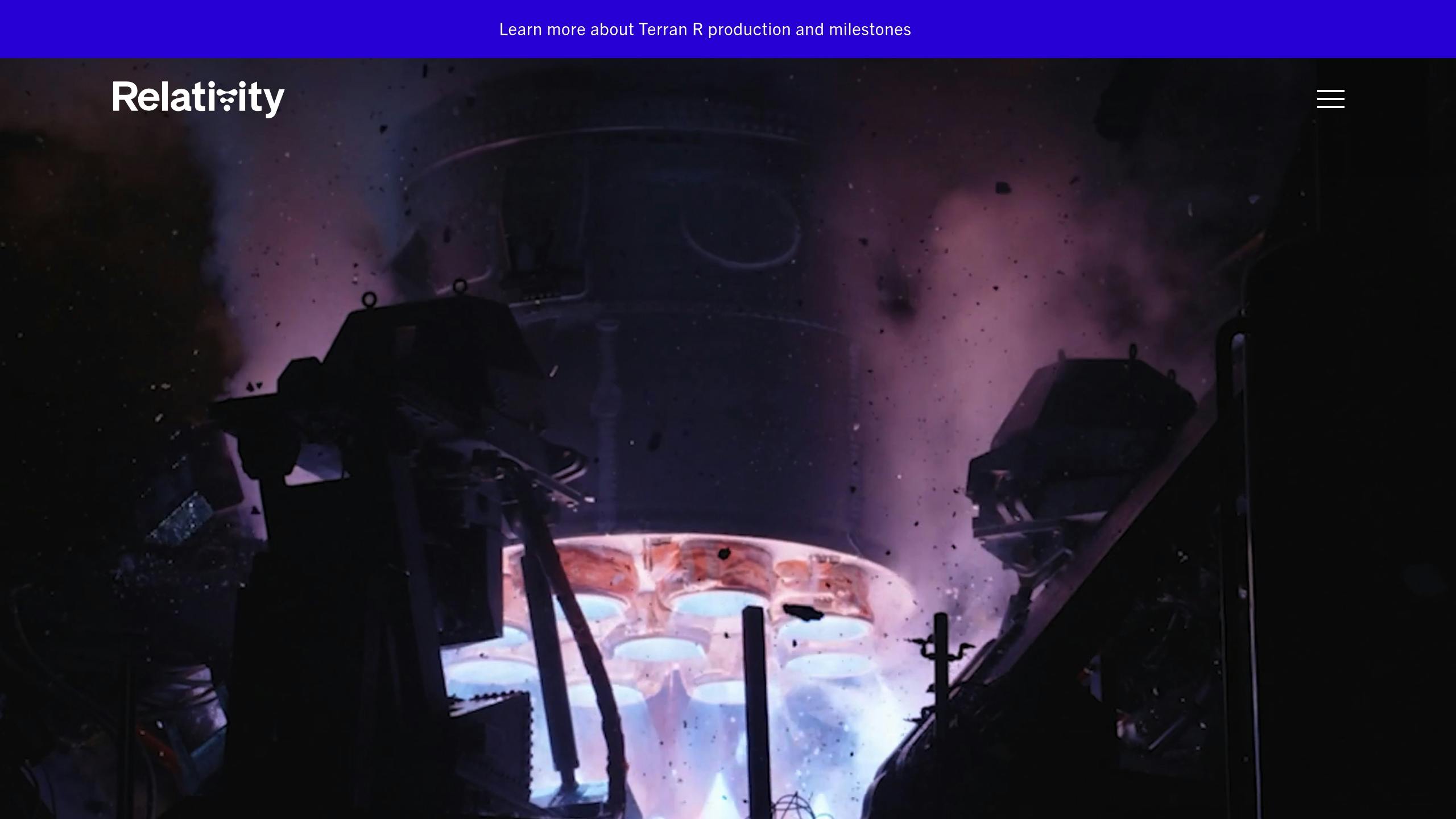
Relativity Space is changing the game in aerospace manufacturing with its use of metal 3D printing, AI, and robotics. At the heart of its process is the Stargate system - the largest metal 3D printer in the world - designed to quickly produce orbital-class rockets.
The company has raised over $1.3 billion in funding, and its fourth-generation 3D printers are 7–12 times faster than earlier models, all while reducing the number of parts needed. By 2023, Relativity Space had 3D printed 85% of its Terran 1 rocket and aims to push that figure to 95% in future designs.
Here’s how Relativity Space stacks up against traditional manufacturing methods:
Manufacturing Aspect Traditional Methods Relativity Space Production Timeline 12–24 months 60 days Part Count Thousands of components Fewer components Design Iterations Months per cycle Days per cycle Manufacturing Control Manual processes Software-driven
"Printing horizontally seems very counterintuitive, but it ends up enabling a certain change in the physics of the printhead resulting in significantly faster printing".
Relativity Space's ability to iterate quickly is impressive. For example, it completed 14 design–print–test cycles for its main injector in just three months using powder bed fusion technology.
The company doesn’t just focus on speed; quality control is a top priority. Stargate printers leverage computer vision and machine learning to inspect parts in real time, ensuring both consistency and reliability while meeting rapid production goals. As the company puts it:
"Our long-term vision is expanding the possibilities for the human experience by creating humanity's industrial base on Mars".
Relativity Space also prioritizes cost-efficient solutions for government and commercial clients. CEO Tim Ellis emphasizes their resource-conscious approach:
"Given the overall economy, we're obviously being very scrappy still, and making sure we're delivering results".
3. Shield AI: AI-Powered Flight Systems

Shield AI is making waves in aerospace by pushing the boundaries of autonomous flight. Its Hivemind Enterprise platform is an AI-driven system that allows aircraft to operate without relying on GPS or remote controls. This technology has already been tested on six different aircraft types and deployed across hundreds of platforms, showcasing its effectiveness in defense operations.
In March 2025, Shield AI teamed up with Booz Allen Hamilton to speed up the rollout of autonomous solutions for U.S. government applications. This partnership combines Shield AI's advanced autonomy systems with Booz Allen's expertise in mission engineering, aiming to strengthen military capabilities in challenging environments.
Key Achievements Across Aircraft
Shield AI's technology has been put to the test on various aircraft, achieving impressive results:
Aircraft Type Achievement Capabilities Demonstrated X-62 VISTA Autonomous flight against human pilots Tactical maneuvers and independent decisions MQ-20 Avenger Successful autonomous operation A-GRA-compliant interface integration Kratos BQM-177A Advanced AI integration High-speed flight at .95 Mach, low-altitude ops MQM-178 Firejet Multi-jet aircraft autonomy Collaborative drone operations
Brandon Tseng, Shield AI's President and co-founder, highlighted the company’s rapid progress:
"This will be the eighth different type of aircraft integration we've done; it will be the fourth jet aircraft. We are getting faster and faster at integrating our AI pilot onto other aircraft because we deliberately architected our AI pilot product and associated software infrastructure as an open, modular platform play that can be systematically reused across DoD hardware. The last integration we did was about 165 days from contract award to first AI-piloted flights, and so we're hoping to top that. I'm also excited to see what our AI pilot will do with the Kratos BQM-177 - an amazing aircraft capable of flying .95 Mach and as low as 6.6 feet above the ocean. Kratos has been a terrific partner in rolling out our AI pilot onto jet aircraft."
How Hivemind Works
Hivemind is built to perform in real-time, even in challenging conditions like GPS-denied or communication-jammed environments. It uses a combination of expert systems and reinforcement learning to enable multiple aircraft to work together seamlessly. Whether it’s coordinating tactics or making split-second decisions, this platform ensures reliable performance.
Steve Escaravage, president of Booz Allen's Defense Technology Group, commented on the collaboration:
"Our adversaries are evolving faster than ever, and Booz Allen is building, scaling and investing in autonomous systems to redefine how America fights and wins. Shield AI is pioneering AI-powered autonomy, and this partnership catalyzes the capabilities of both teams to support our nation's no-fail missions."
The Core Components of Hivemind
Hivemind's architecture consists of four integral parts:
EdgeOS: Handles on-aircraft computing.
Pilot: The AI system responsible for autonomous flight.
Commander: Manages multi-aircraft coordination.
Forge: A development environment for creating and testing new autonomy behaviors.
This modular design allows for quick integration across various platforms, making it a valuable tool for modern defense needs.
4. Varda Space Industries: Zero-Gravity Production
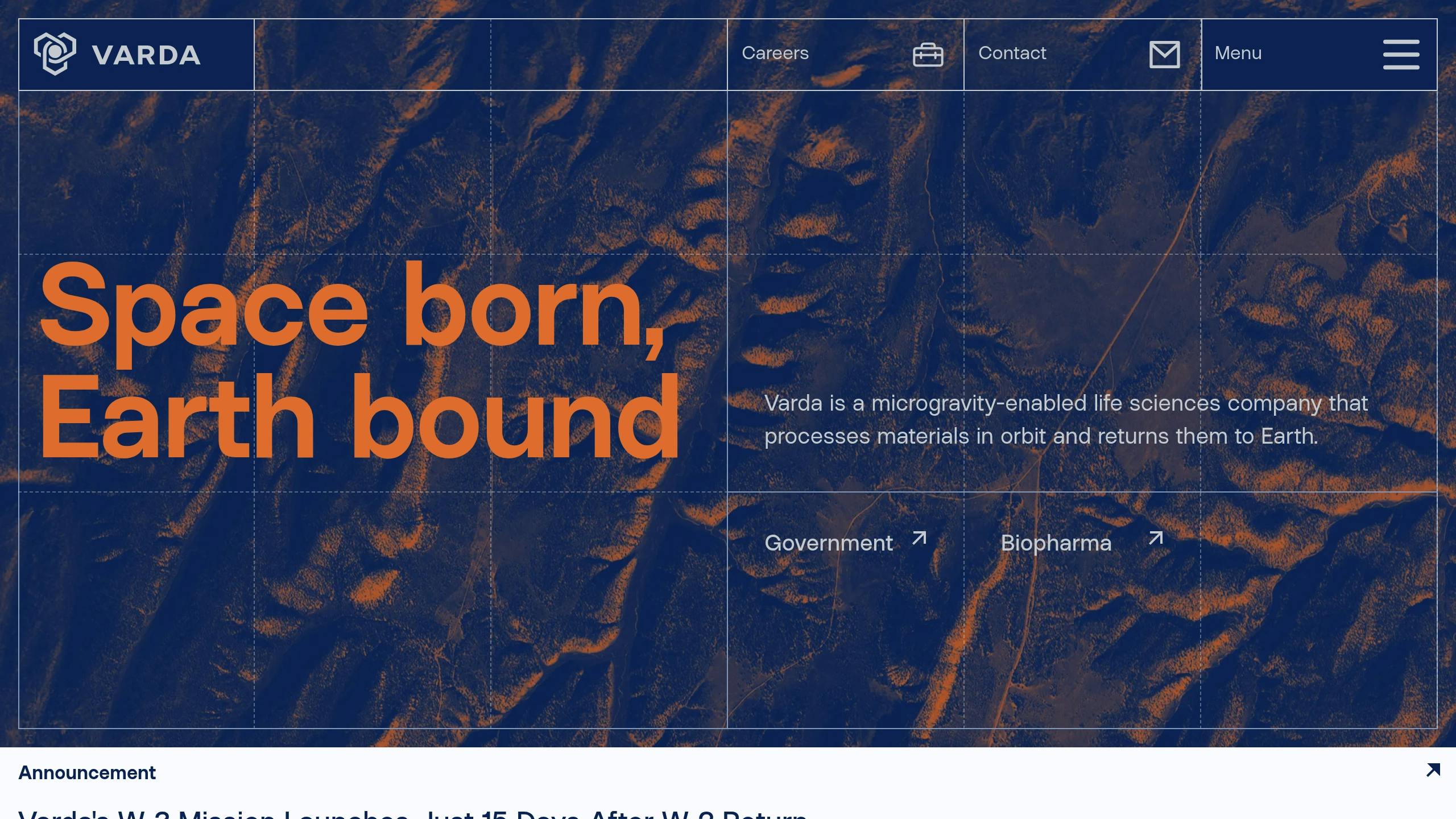
Varda Space Industries is transforming manufacturing by leveraging orbital facilities and microgravity to create materials that are nearly impossible to produce on Earth. Founded in 2021 by Will Bruey, a former SpaceX engineer, and Delian Asparouhov from Founders Fund, the company has quickly become a pioneer in space-based production.
Advanced Manufacturing in Space
The W-Series spacecraft combines a manufacturing module, spacecraft bus, and heat shield capsule. This setup allows for the creation of materials that can’t be made under Earth's gravity. In microgravity, the lack of convection and sedimentation enables the formation of pristine crystal structures - essential for advancements in pharmaceuticals.
Recent Milestones
Varda's progress is evident in its recent missions:
Mission Date Key Accomplishments W-1 June 2023 – Feb 2024 Produced Ritonavir crystals; successful Mach 25 reentry W-2 Feb 27, 2025 Achieved a safe landing in South Australia W-3 March 14, 2025 Launched from Vandenberg Space Force Base
Wendy Shimata, VP of Autonomous Systems at Varda, shared her thoughts on their rapid progress:
"It's remarkable that we have been able to launch our third mission in such rapid succession after the reentry of our second. High cadence launch and return will soon be commonplace, and reentry of materials from space to Earth will go from being novel to being normal."
Funding and Expansion
Varda’s innovative approach has attracted substantial financial support:
Government Funding: $60 million from the US Air Force
Venture Capital: $90 million raised from private investors
Valuation: Reached $500 million as of May 2023
Industry Applications
The platform offers game-changing possibilities across multiple sectors:
Pharmaceuticals: Microgravity supports superior crystal growth, enhancing drug shelf-life and bioavailability.
Fiber Optics: ZBLAN fiber optic cables produced in space could reduce the need for repeaters by 15x, cutting costs by over $100 million for transatlantic cables.
Advanced Materials: Testing and producing flawless crystal structures in microgravity opens new doors for material science.
Sir Peter Beck, Rocket Lab Founder and CEO, emphasized the importance of Varda's work:
"The W-1 mission was the first in-space manufacturing mission to happen outside of the International Space Station. Now, just over a year later, we have a third mission on orbit after bringing another one safely back home. We're immensely proud to have supported our mission partner Varda to usher in a new era of rapid, reliable, and innovative commercial in-space manufacturing and hypersonic reentry capability."
This progress in space manufacturing lays the groundwork for other startups, like SpinLaunch, that are rethinking how we approach space technologies.
5. SpinLaunch: Alternative Space Launch Method

SpinLaunch is shaking up the satellite launch industry with a centrifugal system that skips traditional fuel-based rockets. Instead, this electric-powered method is designed to cut costs and reduce environmental impact, offering a new way to access space.
How the Technology Works
At the heart of SpinLaunch's system is a massive 300-foot vacuum chamber. Inside, a high-strength tether spins payloads to speeds of up to 5,000 mph before releasing them into the atmosphere. Here’s a quick breakdown of the key specs:
Feature Details Chamber Diameter 300 feet Max Speed 5,000 mph Payload Capacity 440 lbs Target Altitude 200,000 ft Yearly Launches 1,000+
Lowering the Cost of Space Launches
SpinLaunch's approach slashes satellite launch costs to around $250,000 per mission. For context, the cost per kilogram falls between $1,250 and $2,500. This is achieved by using 75% less fuel and reducing overall expenses by up to 90% compared to traditional rocket launches.
David Wrenn, SpinLaunch's vice president of technology, explains the impact of fuel dependency:
"Around 92% of each rocket's composition is allocated to store fuel used to power its launch into space. The cost of space launches are therefore subjected to rising fuel prices, exacerbated by economic inflation."
A Cleaner Way to Reach Space
By relying on an electric-powered system, SpinLaunch drastically cuts fuel use, limiting its environmental footprint. Once the payload reaches 200,000 feet, a small onboard rocket provides the final boost to achieve orbital velocity (17,150 mph). This method blends efficiency with environmental consciousness.
Testing and Development Milestones
SpinLaunch has made steady progress in proving its system’s capabilities:
In September 2022, the company completed its 10th suborbital test flight, carrying payloads from NASA and other organizations.
Feasibility studies are underway in Western Australia to evaluate potential sites for the orbital accelerator.
Tests of the dual AC electric motors have confirmed they can achieve the required rotational speeds while maintaining the vacuum chamber's structural integrity.
SpinLaunch’s CEO highlights the importance of these developments:
"The data and insights collected from flight tests will be invaluable for both SpinLaunch, as we further the development of the Orbital Launch system, and for our customers who are looking to us to provide them with low-cost, high-cadence, sustainable access to space."
SpinLaunch’s system is not just a new way to launch satellites - it’s a bold step in reshaping the aerospace industry in the United States.
6. Boom Supersonic: High-Speed Passenger Jets

High-speed passenger jets are set to reshape American aerospace innovation, thanks to advancements in propulsion and launch technologies. Boom Supersonic is leading this charge with its Overture aircraft, capable of flying at Mach 1.7 - twice the speed of today's airliners. By blending advanced technology with eco-friendly practices, Boom aims to redefine commercial air travel.
Overture: A New Chapter in Aviation
The Overture aircraft brings a host of advancements to the table:
Feature Details Passenger Capacity 64-80 passengers Maximum Speed Mach 1.7 over water Land-Based Speed Up to 20% faster than current aircraft Fuel Type 100% sustainable aviation fuel (SAF) Current Orders 130 aircraft Major Customers American Airlines, United Airlines, Japan Airlines
Quiet Supersonic Flight: Boomless Cruise
In January 2025, Boom's XB-1 demonstrator aircraft showcased a groundbreaking feature: 'Boomless Cruise.' This innovation enables supersonic travel without the disruptive sonic boom. Founder and CEO Blake Scholl celebrated the achievement:
"XB-1 broke the sound barrier three times during its first supersonic flight - without an audible boom"
Faster Travel Times
Boom's technology slashes flight durations on key international routes. For example:
New York to London: Reduced to 3 hours and 40 minutes
Tokyo to Seattle: Cut from eight hours to four and a half hours
Commitment to Eco-Friendly Aviation
Boom is serious about sustainability. Partnering with Dimensional Energy and AIR COMPANY, they’ve secured sustainable aviation fuel for Overture's flight tests. This supports their goal of net-zero emissions and aligns with the U.S. government's push to produce 35 billion gallons of SAF by 2050.
Growing Demand for Supersonic Travel
Boom's eco-conscious focus is driving strong consumer and market interest. Surveys reveal:
97% of passengers are interested in supersonic travel
87% would switch airlines for faster flights
Over 600 profitable routes identified worldwide
Kathy Savitt, President and Chief Business Officer at Boom Supersonic, underscored the importance of this innovation:
"Human connection and in-person experiences have become even more important. Sustainable supersonic flight will enable greater, more accessible travel globally."
Chief Test Pilot Bill "Doc" Shoemaker also praised the team's efforts on the XB-1 project:
"Everyone on the XB-1 team should be incredibly proud of this achievement"
Boom Supersonic is setting a new standard in aviation, combining speed, eco-friendly practices, and commercial practicality to maintain America's leadership in aerospace innovation.
7. Epirus: High-Power Defense Systems

Epirus is reshaping defense strategies with its high-power microwave (HPM) systems designed to counter threats like drone swarms. At the heart of their innovation is the Leonidas platform, which blends solid-state, long-pulse HPM technology with artificial intelligence to create advanced defense solutions.
The Leonidas system leverages Gallium Nitride (GaN) semiconductors to produce durable and efficient microwave beams. Its software-driven design ensures precise threat neutralization while protecting friendly assets. These advancements have earned Epirus major military contracts, highlighting the effectiveness of their approach.
Feature Leonidas Capabilities Operating Cost Minimal - pennies per neutralization Radiation Output Zero ionizing radiation Power System Solid-state, long-pulse HPM Target Capacity Handles multiple threats at once Integration Works with FAAD C2 systems Deployment Options Mobile, pod-based, fixed installations
Epirus’ technology has already made a strong impact. In January 2023, the company secured a $66.1 million contract with the U.S. Army for the Indirect Fire Protection Capability–High-Power Microwave (IFPC-HPM) program. By May 2024, they delivered four prototype systems, complete with training and testing.
Traditional counter-drone measures can cost the U.S. military up to $2 million per unit to neutralize drones that may only cost a few hundred or thousand dollars. Epirus tackles this cost imbalance with its efficient and scalable solution.
"Epirus combines the latest in solid-state, long-pulse high-power microwave systems with AI and advanced electronics to protect and sustain civilization."
The Leonidas platform is versatile, offering multiple deployment options: mobile units for quick response, pods for integration with airborne platforms, and fixed installations for permanent defense setups. Its software-controlled safe zones operate at low voltages and emit zero ionizing radiation, ensuring precision without compromising safety.
"Unlike laser systems which require massive amounts of energy to operate and keep the beam focused on a single target, Leonidas' software definition gives it unprecedented levels of precision - for example, the ability to take out multiple hostile targets without affecting nearby friendly aircraft."
8. Joby Aviation: Electric Aircraft Development
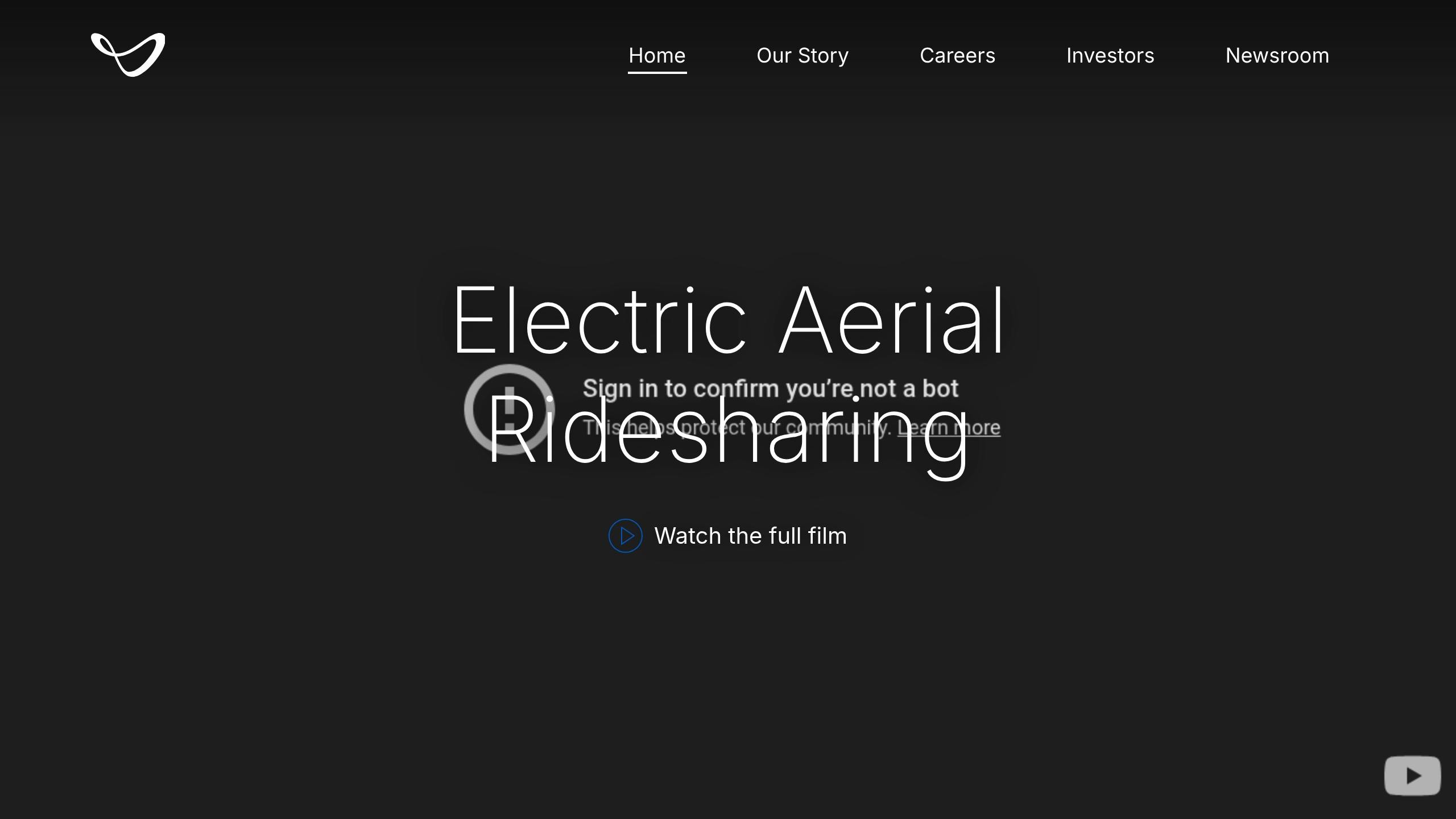
Joby Aviation is making strides in urban air mobility with its electric vertical takeoff and landing (eVTOL) aircraft. These developments highlight the growing role of technology in aerospace and cement the United States' position in advanced aviation.
Feature Specification Passenger Capacity 1 pilot + 4 passengers Maximum Speed 200 mph Range 150 miles Empty Weight 4,300 lb Maximum Payload 1,000 lb Maximum Takeoff Weight 5,300 lb Cruise Noise 45 dBA
The aircraft's electric motor is a powerhouse, offering nearly double the peak power of a Tesla Model S Plaid. Its battery technology is also impressive, achieving 288 W•h/kg at the cell level and 235 W•h/kg at the pack level.
In November 2023, Joby showcased its capabilities by completing the first electric air taxi exhibition flights in New York City. These flights took off from the Manhattan Downtown Heliport and flew over the Hudson River. The company also secured a $163 million contract from the Department of Defense, the largest in the eVTOL industry. As part of this agreement, two aircraft will be delivered to MacDill Air Force Base in 2025. This dual focus on commercial and defense applications highlights Joby's wide-ranging influence on air mobility.
One of the standout features of the aircraft is its quiet operation, making it distinct from traditional aircraft.
"Over the course of this test program, our team has shown the world how real electric air taxis are, with tens of thousands of miles flown using today's battery technology."
JoeBen Bevirt, Founder and CEO of Joby
Joby has already completed three out of five FAA certification stages. Early in 2024, the company made significant progress during FAA testing, conducting 31 pilot-on-board flights over just two days.
In 2023, Joby also trained four U.S. Air Force pilots to operate its eVTOL aircraft. These pilots successfully executed complete flight profiles, including the critical transition from vertical to wingborne flight.
9. Rocket Lab: Small Satellite Launch Services
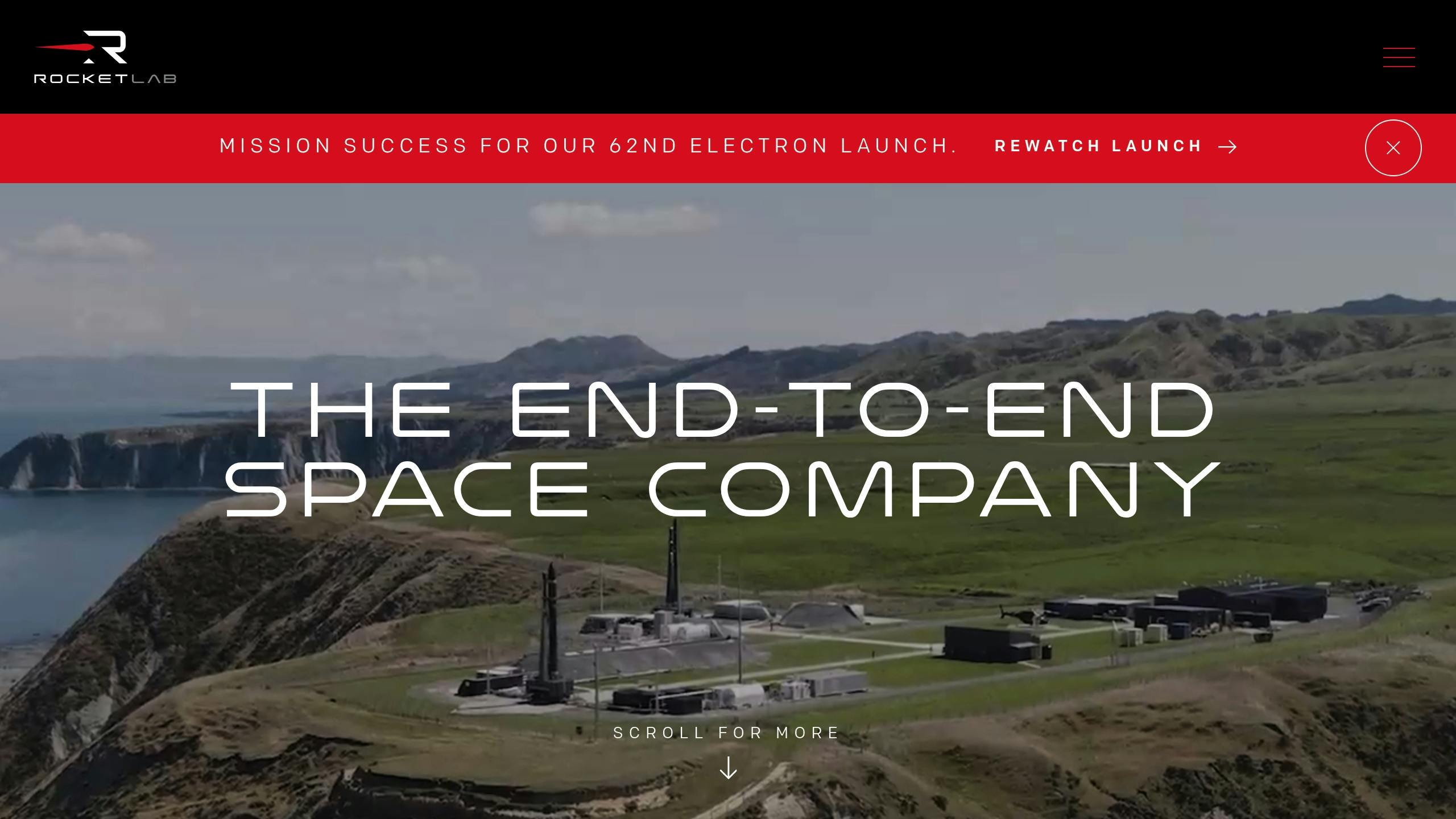
Rocket Lab has become a major player in small satellite launches, with its Electron rocket ranking as the second most frequently launched U.S. rocket. By providing fast, dependable, and affordable launch services, the company has reshaped the aerospace industry.
Launch Capabilities Specifications Payload Capacity Up to 300 kg to LEO Total Satellites Launched 216 Successful Launches 62 Annual Launch Opportunities 130+ Launch Sites 3 (U.S. and New Zealand) Launch Complex 2 Capacity Up to 12 missions/year
Rocket Lab's technology stands out, particularly with its Rutherford engine - the first-ever 3D-printed, electric-pump-fed engine - and its Kick Stage system, which ensures accurate orbit placement and supports multiple payloads in a single mission.
By vertically integrating its operations, Rocket Lab manufactures its own satellite components, subsystems, and software. This approach has supported over 1,700 satellites and contributed to 150 cumulative years of space operations.
One of Rocket Lab's standout achievements was NASA's CAPSTONE mission to the Moon in 2022. Using their Explorer platform and the Electron rocket, the mission successfully tested the stability of a Near Rectilinear Halo Orbit around the Moon.
"Electron is already an established workhorse rocket that has been delivering frequent and reliable access to orbit for more than five years. By evolving it into a reusable launch vehicle we plan to further increase our already steadily rising launch cadence, offering more launch availability to our customers at a time when space access is severely constrained globally."
Peter Beck, Rocket Lab founder and CEO
Rocket Lab's Launch Complex 2 in Virginia highlights its focus on U.S. aerospace leadership. This facility serves commercial, civil, defense, and national security clients, with the ability to handle up to 12 missions per year. Combined with its New Zealand and U.S. launch sites, the company offers over 130 annual launch opportunities.
Looking ahead, Rocket Lab is working on the Neutron launch vehicle, designed for medium-lift missions such as constellation deployments, cargo resupply, and interplanetary exploration. This development reflects the company's commitment to pushing the boundaries of aerospace technology.
10. Sierra Space: Space Station Components
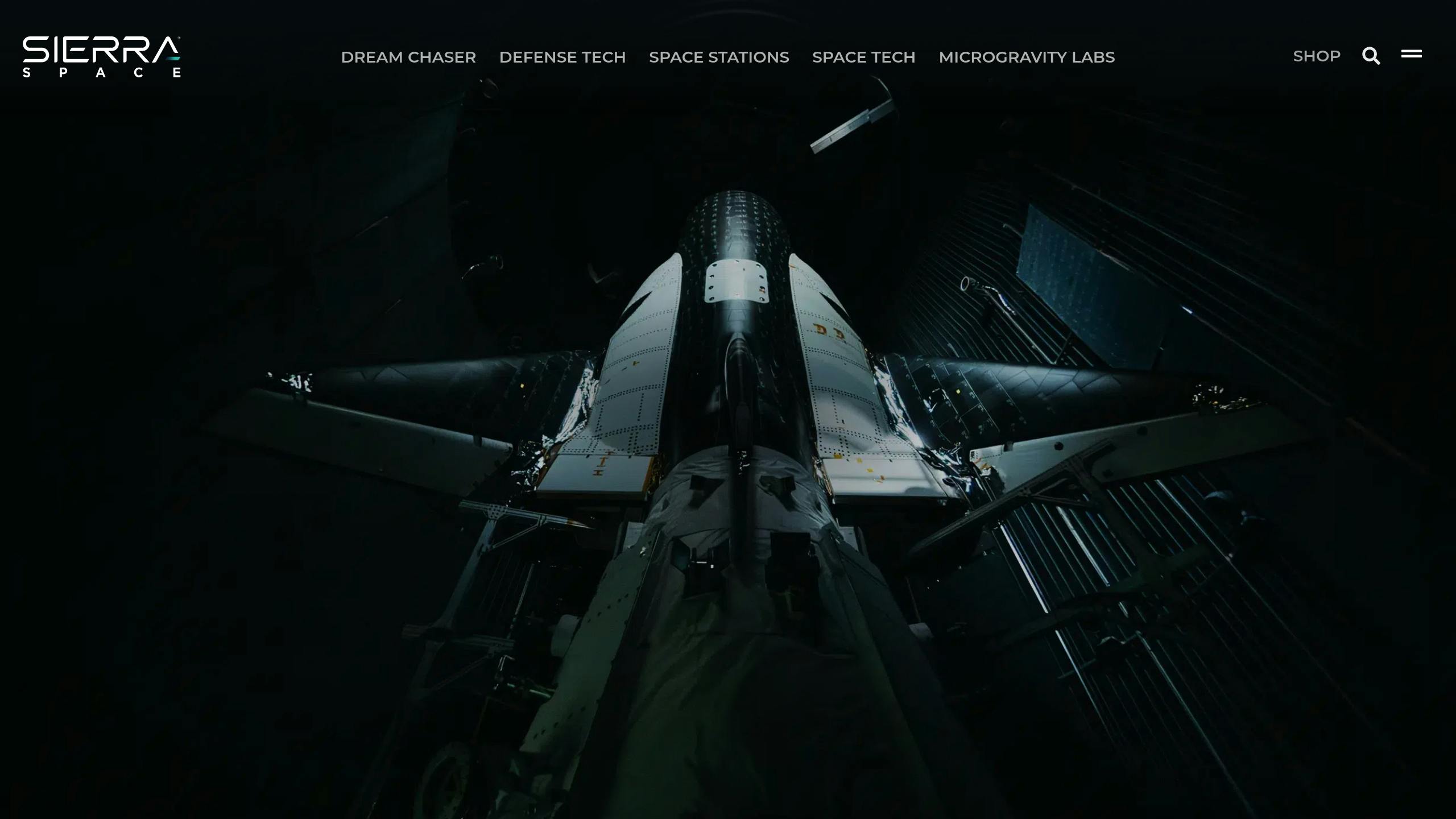
Sierra Space is redefining orbital infrastructure with its LIFE (Large Integrated Flexible Environment) habitat technology. This system uses "softgoods" - specialized woven fabrics that become rigid structures when inflated. These materials were developed in collaboration with ILC Dover.
LIFE Habitat Specifications Details Safety Factor (LEO) >16x Safety Factor (Lunar) 23x Test Unit Height >20 feet Volume (Test Article) 300 m³ Burst Pressure Test 255 psi Volume vs. Transport Ratio 5:1 expansion
The design maximizes space efficiency. For instance, a single 1,400-cubic-meter LIFE habitat packed inside a seven-meter rocket fairing can surpass the International Space Station's total volume in just one launch.
The LIFE 10 prototype, a scaled-down version, exceeded NASA's burst pressure requirements by 27%. This was achieved using a pressure shell reinforced with high-strength Vectran straps and advanced fabrics.
"We are driving the reinvention of the space station that will shape a new era of humanity's exploration and discovery in Low Earth Orbit and beyond. Sierra Space's inflatable space station technology offers the absolute largest in-space pressured volume, the best unit economics per on-orbit volume and lowest launch and total operating costs." - Tom Vice, Sierra Space CEO
Sierra Space is focused on maintaining U.S. leadership in Low Earth Orbit. Their LIFE habitats are designed with windows to reduce feelings of confinement and provide stunning views of Earth.
With over 30 years of experience and 500 successful missions, Sierra Space offers a robust platform for commercial space operations. Their services support commercial, defense, and national security needs.
This design not only improves current space station capabilities but also sets the stage for future orbital and lunar infrastructure.
"No other company is moving at the speed of Sierra Space to develop actual hardware, stress-tested at full scale, and demonstrate repeatability. We've taken a softgoods system that very few companies around the world have been able to design, and now we have consistent, back-to-back results." - Shawn Buckley, VP of Earthspace™ Systems, Space Stations, at Sierra Space
As the International Space Station approaches retirement, Sierra Space's LIFE technology ensures a continuous American presence in Low Earth Orbit and advances infrastructure for lunar missions.
Conclusion
From Hermeus's Mach 5 advancements to Sierra Space's orbital habitats, these startups are shaping the future of American aerospace. With the global space economy now surpassing $546 billion, these companies are pushing U.S. aerospace forward by leveraging AI, automation, and advanced materials.
These advancements are not just transforming industries - they're addressing critical national security needs. For example, Shield AI's autonomous systems and Epirus's counter-drone technologies are tackling pressing challenges, supported by the U.S. Department of Defense's increased budget of $842 billion for fiscal year 2024.
Private sector funding and partnerships play a key role in keeping the U.S. ahead in technology. As Alumni Ventures highlights:
"Safeguarding America's future demands continued effort... U.S. strategic technologies are essential to security and prosperity. That's true now more than ever."
From hypersonic travel to cutting-edge defense systems, these advancements contribute to a thriving ecosystem of aerospace innovation. The growing use of AI and software-driven solutions is transforming both commercial and defense sectors, with ongoing public and private support fueling progress.
With over 9,000 new companies entering the aerospace industry in the past five years, the U.S. continues to solidify its leadership, ensuring technological dominance for the future.



